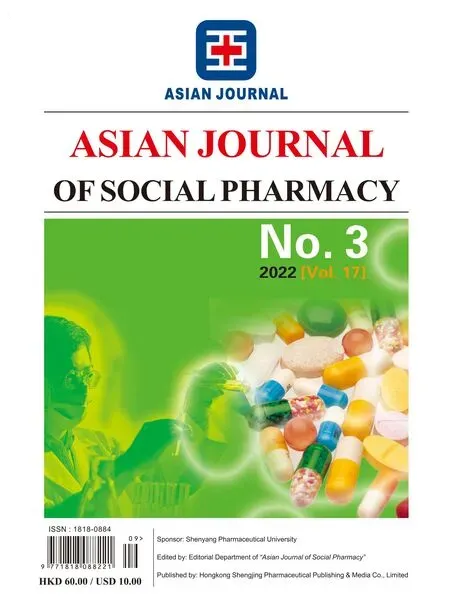Research on the Price Level of Drugs in Short Supply in China
2022-10-10LiuFuyaoSunLihua
Liu Fuyao,Sun Lihua
(School of Business Administration,Shenyang Pharmaceutical University,Shenyang 110016,China)
Abstract Objective To determine the price level of drugs in short supply and conduct affordability evaluations,thus putting forward countermeasures and suggestions for the management of prices of these drugs.Methods Taking the national list of drugs in short supply and the national key monitoring list of clinically essential drugs in short supply as the research objects,the bid-winning prices were searched through various bidding websites across the country,and the price levels of the varieties in the list were evaluated through fixed base price index,median price ratio and other indicators.The per capita income evaluation method was used to evaluate the affordability of the drugs on the list.Results and Conclusion Among the 30 varieties with valid international reference prices,25 are higher than the international reference prices.The prices of 14 kinds of drugs are 1-5 times higher than the international reference prices.The prices of 10 kinds of drugs are 6-35 times higher than the international reference prices.In rural and urban areas,50% and 73% of the drugs in short supply cost more than two times of the daily income for each course of treatment.The current price levels of selected drugs in short supply are generally high.It is recommended that these drugs should be classified and managed.Besides,the shortage of drugs should be included in the centralized procurement organized by the state to solve the unstable supply in the market.
Keywords: drug in short supply;price;affordability
The shortage of drugs is a worldwide problem.The 2012 research report of the World Health Organization pointed out that 21 developed and developing countries were affected by the shortage of drugs[1].The problem of drugs in short supply in China has always been concerned by the Central Government.The relevant administrative departments have attached great importance to guaranteeing the supply of drugs.Some policy documents were issued in the past to prevent this problem.In April 2020,the National Health Commission of the People’s Republic of China issued the “Notice on the Management Measures for National Shortage Drug List (Trial)”(hereinafter referred to as the “Measures”)[2],which listed the varieties of drugs on the national and provincial shortage drug lists,and enterprises were allowed to make independent quotations on the provincial drug procurement platform so that medical institutions could directly purchase through the platform.Under the provisions of the “Measures”,varieties on shortage list can have independent quotations on the Internet,and the price control for drugs in short supply will be gradually relaxed.In December 2020,the Central Government issued“Notice of the National List of Drugs in Short Supply”(hereinafter referred to as the “National List”)[3].It has become a trend to relax the price control of drugs in short supply,but the problem of drugs in short supply in China has not yet been completely resolved.The problem of drugs in short supply has attracted more attention from the public.In recent years,many reports are on the rising prices of the drugs in short supply.The public realize that the low-cost drug market is prone to drugs in short supply.Therefore,systematic research on the price level of drugs in short supply is of great significance to the management of these drugs.
1 Materials and methods
1.1 Source of information
The data of this research are derived from the website of National Health Commission of the People’s Republic of China by searching “National List of Drugs in Short Supply” and “National Essential Drugs List (2018 Edition)”.Some are from National Healthcare Security Administration by searching national medical insurance drug lists.Others are from websites of provincial drug bidding platform,public resource trading centers,and network databases (such as Jiangsu Public Resource Trading Network,Guizhou Public Resource Trading Center,Yaozhi.com,etc.) by searching the bid price of drugs in short supply.
1.2 Methods
This study determines the price level of drugs in short supply by calculating the ratio of the median price of China to the international reference price.At the same time,the per capita income method is used to evaluate the affordability of these drugs based on their current prices.
There are six varieties on “National List” which have more serious shortages at the national level.The price trend analysis is carried out to find out the increase and stability through the fixed base price index[4].Fixed base price index refers to the price index that is fixed in a certain time compared to the base period.Usually,a certain year is used as the base period to calculate.The fixed period price level is 1.If the price index of the calculation period is higher than 1,it means that the price level in this period has risen,and if it is lower than 1,it indicates the price level in this period has declined.
The median price ratio (MPR) is calculated based on the median price of the winning bid price in the latest year[5].MPR=Median unit price of a drug/International reference price of the drug.If MPR <1,it means that the price of a drug in the survey area is lower than the international reference price.If MPR > 1,it means that the price of the drug is higher than the international reference price.The international reference price comes from the“International Medical Product Price Guide”[6]published by the Management Sciences for Health(MSH) in cooperation with the World Health Organization (WHO).This version provides two prices,including supplier prices and buyer prices.The buyer’s prices are usually the international bidding (or bidding) price of government agencies.Because the data in this research is the winning price of drugs in various provinces,this research selects the buyer’s price as the reference,and the GDP deflator is used to adjust the deflation or inflation in a specific country.Besides,the deflator is used to study the time difference between the selected base year.If the national consumer price index (CPI) of the survey year is inflated (higher) compared to the base year,then the drug price needs to be reduced to the base year price (asa1 below).If the CPI in the survey year is lower than the CPI in the base year,then the drug price needs to be adjusted according to the base year price (asa2 below).
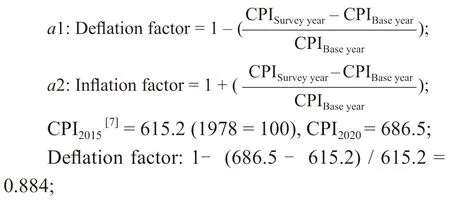
Data source: National Bureau of Statistics,CPI2020is calculated based on the data released by the National Bureau of Statistics[8]and CPI2019(1978=100)=669.8[9].
2 Results and analysis
2.1 Analysis of the bid-winning price trend of 6 drugs in the “National List”
Based on the trend analysis of the bidwinning prices of 6 drugs on the “National List”from 2015 to 2020,these drugs are benzathine penicillin,methotrexate,posterior pituitary injection,mitoxantrone,neostigmine and sodium thiosulfate injection formulations.The specific price trends of winning bids are shown in Fig.1 to Fig.6 (As of the time of data analysis,the data on the winning bid price of methotrexate in 2020 was not available,and Fig.3 only shows the data from 2015 to 2019) .
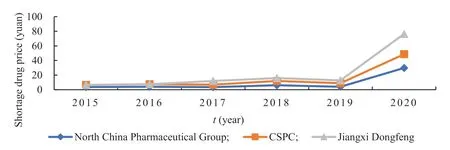
Fig.1 Benzathine penicillin bid-winning price trend (2015-2020)
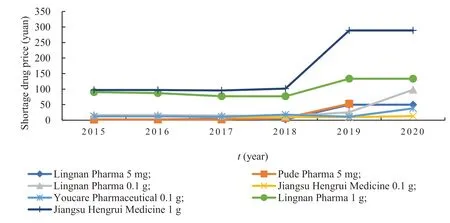
Fig.2 Methotrexate bid-winning price trend (2015-2020)
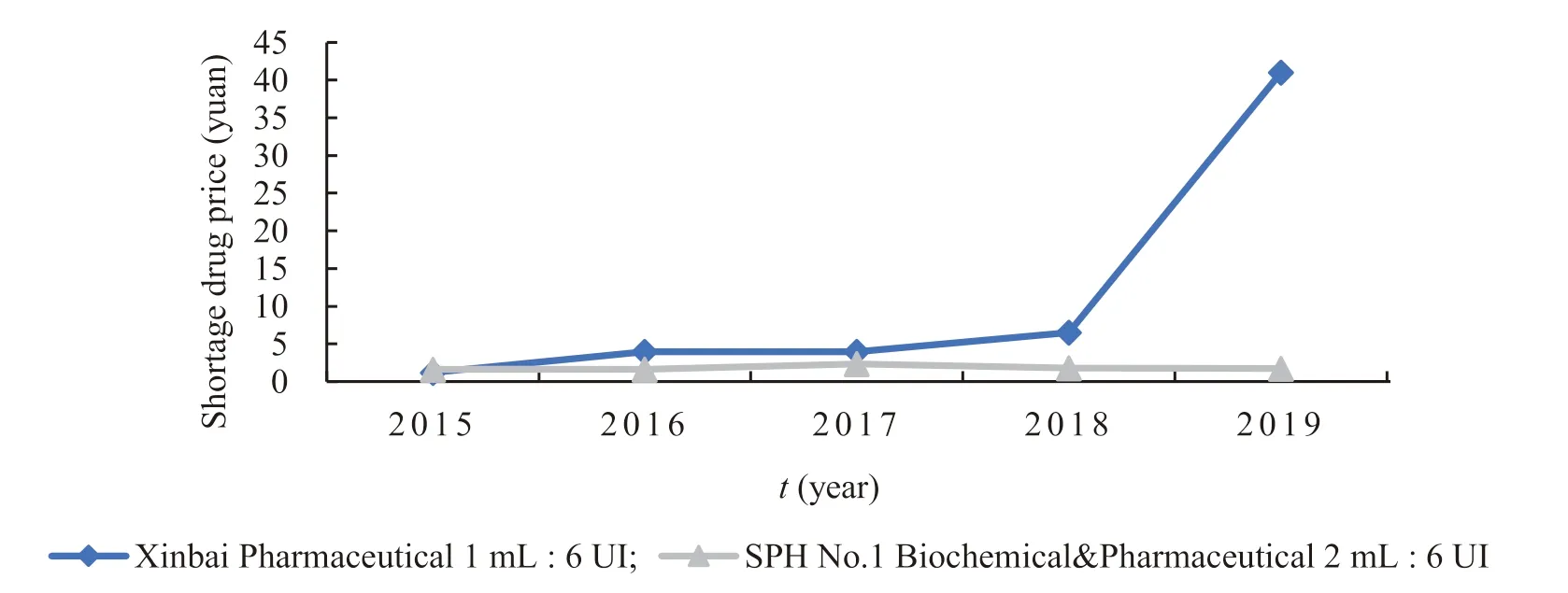
Fig.3 The posterior pituitary gland bid-winning price trend (2015-2019)

Fig.4 Mitoxantrone bid-winning price trend (2015-2020)
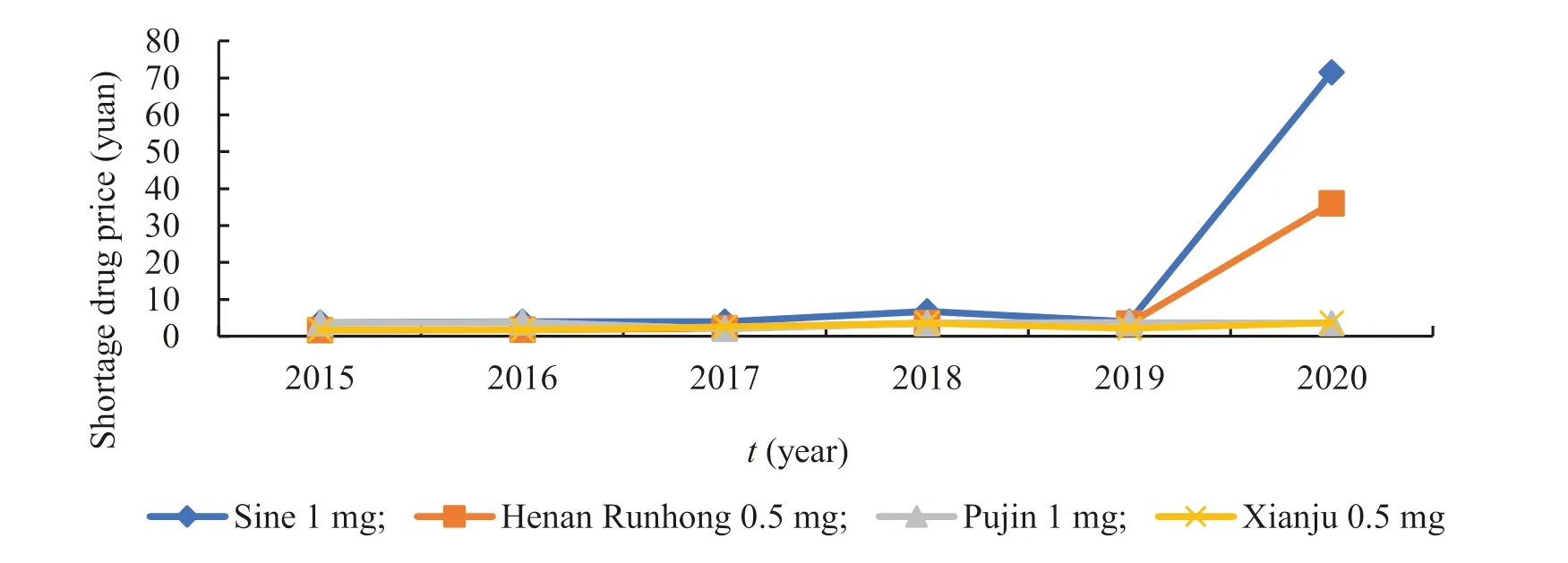
Fig.5 Neostigmine bid-winning price trend (2015-2020)
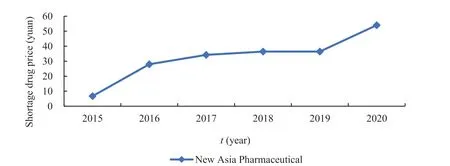
Fig.6 Sodium thiosulfate bid-winning price trend (2015-2020)
The above figure shows that the winning prices of 5 drugs except mitoxantrone have a rising trend during 2015-2020,and the rising trend is obvious from 2018 to 2020.Not all drugs have increased their winning prices,nor have the prices of all drugs increased every year.The increase is related to factors such as the delayed update of the bid-winning price of drugs.In summary,the prices of six drugs in the national shortage drug list all have a rising trend after the provincial list of drug shortage has been released one after another.
The price changes trend of 6 drugs is analyzed through the fixed base price index.Taking 2015 as the base period for analysis,we can exclude the benzathine penicillin (produced by Dongfeng Jiangxi)and the posterior pituitary injection (produced by Anhui Hongye) because they are not on the 2015 base period data.Fig.7 shows that the price increase trend of each variety in 2015 is relatively flat.Among them,methotrexate,neostigmine,and posterior pituitary have unstable price increases.
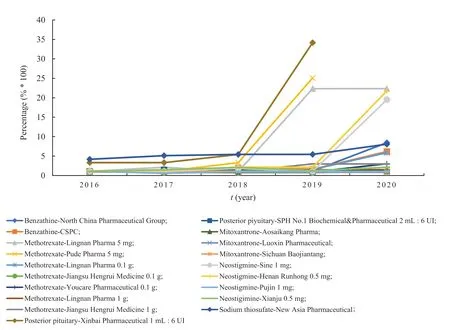
Fig.7 Changes in the fixed-base price index of the bidding prices of the six drugs (2015-2020)
2.2 The price level of other 57 varieties
The bidding prices are searched through the websites of various provinces with the keywords of “shortage” and “easy to be in short supply”,and the data for 2020 are included.In the same year,the bidding prices of the drugs in short supply in many provinces and the median prices of each province are included.For drugs that do not have the keywords of“shortage” and “easy to be in short supply”,priority will be given to the actual purchase price of medical institutions.If there is no actual purchase price,the median price of the winning bid in 2020 is selected.
The median price ratio of 57 drugs are calculated,and the results are shown in Table 1.
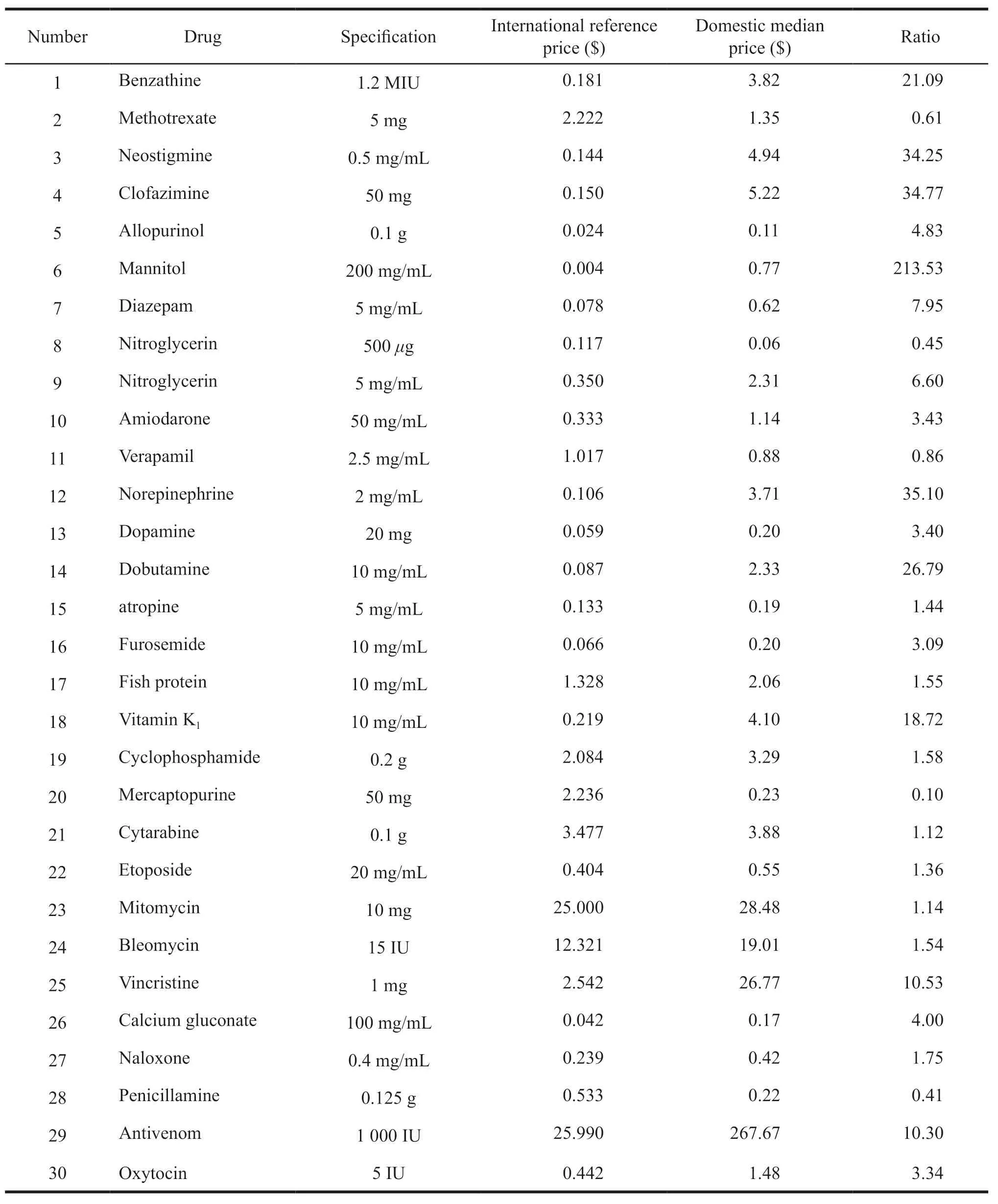
Table 1 The price ratio of 57drugs to the median price of the international reference price
Through searching the “Price Guide of International Medical Product of 2015 Edition”,a total of 30 drugs are retrieved.Among them,the prices of 25 varieties are higher than the international reference price.The prices of 14 kinds are 1-5 times more than the international reference prices.The prices of 10 kinds are 6-35 times as much as the international reference prices.
Through analysis,it can be found that drugs in short supply have a trend of rising prices in recent years,and some prices of drugs are higher than the international reference prices.Such price-increasing drugs are not completely in short supply.Due to the excessive price increase,buyers are unable to afford which results in the unstable supply and demand.The “Measures” relax the price control on drug in short supply.If the price management of these drugs cannot be further refined,it may lead to a negative effect on policies,causing the price to continue to rise.Therefore,medication will bring a heavier burden to the public.
3 The affordability of drugs in short supply
The increase of the price of drugs in short supply can bring a heavy burden to patients.In this study,per capita income is used to evaluate the affordability of these drugs by calculating the cost of a course of treatment for a certain disease for urban and rural residents[10].The cost of the drugs can be calculated according to the bid-winning price,daily dosage and course of treatment with the drugs in short supply,and the evaluation result is obtained by combining the average daily income of urban and rural residents in China.
The standard survey method of WHO/HAI stipulates that the treatment cost of each disease is calculated according to the 7-day dosage for acute diseases and the 30-day dosage for chronic diseases[11].Therefore,the main indications are selected to judge the acute and chronic diseases and calculate the cost.In 2019,the per capita disposable income of urban residents in China is 42 359 yuan,with an average daily average of 116.05 yuan.Meanwhile,the per capita disposable income of rural residents is 16 021 yuan,with an average daily average of 43.89 yuan[12].The cost of drugs per treatment course (Drug expenditure=The price of the winning bidder of the drug × The total number of units required per treatment course) is equivalent to a multiple of the per capita daily disposable income of urban and rural residents.According to this method,except for the benzene bar whose bidding price is not found,the affordability evaluation results of the remaining 56 drugs are shown in Table 2.
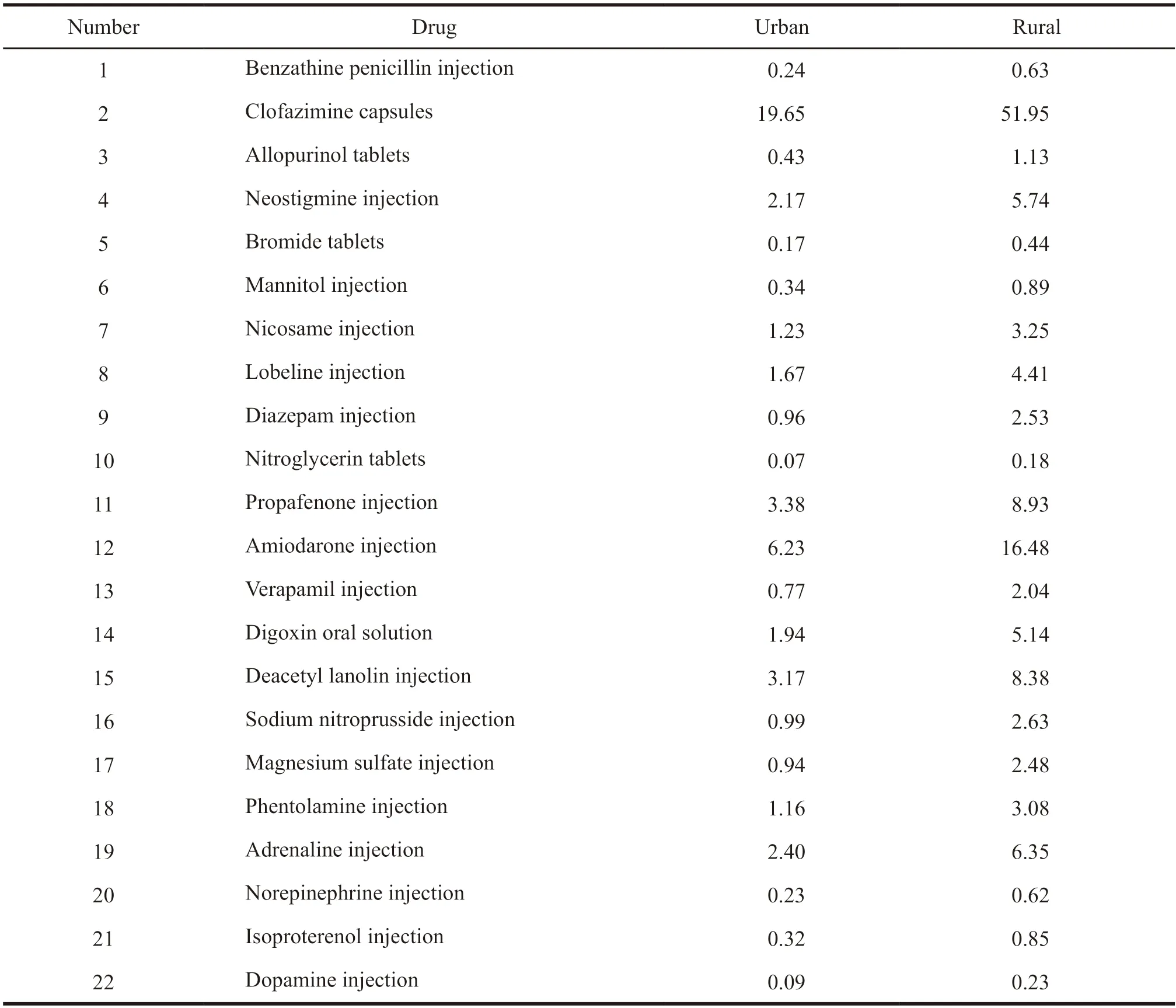
Table 2 The affordability of drugs in short supply based on the per capita income method
(to be continued)
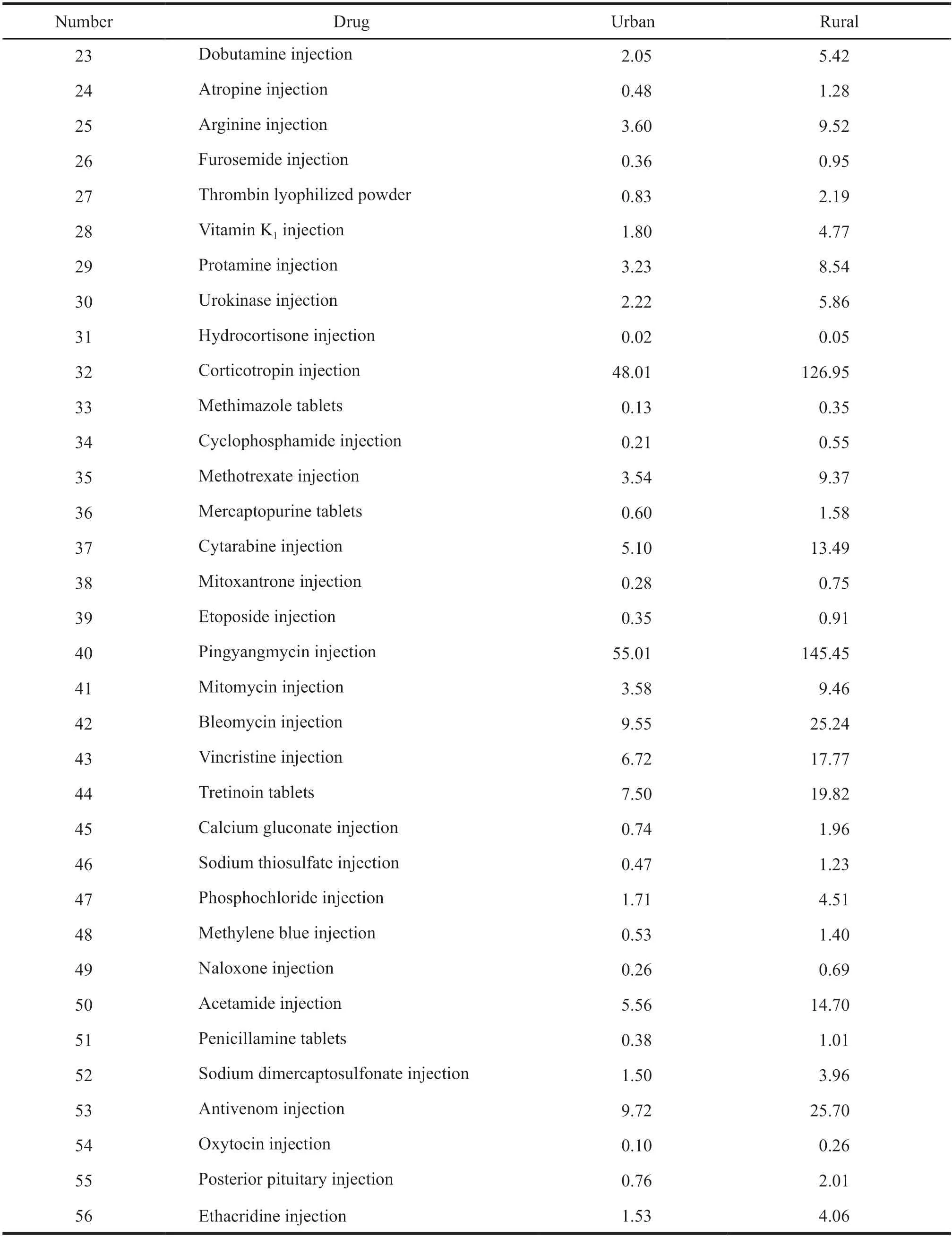
Continued Table 2
In urban and rural areas,50% and 73% of the drugs in short supply cost two times than the daily income per treatment course,indicating that the affordability of these drugs calculated at the latest bidwinning price is undermined.It is worth noting that although the affordability of these drugs in China is relatively undermined,the heavier burdens involve more oncology drugs and cardiovascular drugs.This is related to the fact that there are more types of cardiovascular drugs and oncology drugs on the National List.Vascular drugs are mostly used for chronic diseases and require long-term medication.Oncology drugs are more expensive than ordinary drugs,which makes the burden of such drugs heavier.In addition to price reasons,the burden of drug consumption has also become a factor affecting the affordability of drugs.
4 Discussion and suggestions
Through the analysis of the price levels of the drugs in short supply on the national list,it can be found that the price of shortages has shown an increasing trend.The shortage of drugs for some diseases will result in a greater economic burden of drug use.The data included in this study is the bidwinning price.According to the existing policies and regulations,hospitals must cancel the drug markup.In the actual medication process,due to the compensation of medical insurance reimbursement,the medication burden will be lower than the current estimate.However,the group of patients with chronic diseases such as cardiovascular disease is huge.From the perspective of the whole society,under the premise of universal medical insurance in China,the price increase will eventually lead to increased pressure on the medical insurance fund.Therefore,the management of shortage of drugs should be improved.
4.1 Classification management of drugs in short supply
After investigating the current situation of the drugs in short supply,we find the problem is quite serious now.Therefore,the varieties that cannot be fully supplied by the market will be given policy dividends in accordance with the provisions of the“Measures” to increase the enthusiasm of enterprises for production.The normal supply of low-cost drugs in short supply can be ensured through small-variety(drugs in short supply) production bases and other resource integration models.For “fake drugs in short supply” that can be supplied by the increase of prices,their prices should be reasonably controlled.Besides,the government should conduct interviews with companies to survey their cost so that the pricing mechanism of such drugs can be improved.Thus,we can prevent companies from taking advantage of the policies.
4.2 Incorporating drugs in short supply into the national centralized drug procurement
The drugs in short supply include common drugs,tumor drugs and other varieties with a large market space.Due to the exclusive production of enterprises and other reasons,there is a monopoly phenomenon.There are also some small varieties of drugs with a small market share and a small number of patients.The company that wants to maintain survival must adopt price-increasing sales.For the drugs in short supply that meet the above characteristics,their quantity can be exchanged through the state’s centralized procurement.The national or provincial consumption is unified to implement bidding and negotiation to achieve a win-win situation,which also can reduce the economic burden for patients.
杂志排行
亚洲社会药学杂志的其它文章
- Analysis of Factors Affecting Online Drug Purchase -Based on Factor Analysis
- Benefit-Risk Assessment for PD-1/PD-L1 lnhibitors in the Treatment of Non-Small Cell Lung Cancer
- Research on Problems and Countermeasures of Patent Evaluation System in Pharmaceutical Enterprises
- Comparative Study and Enlightenment on lnnovation Achievements of Pharmaceutical lndustry in Liaoning Province
- Research on the Relationship between Cooperation lnnovation Expenditure and Economic Output of China’s Pharmaceutical lndustry
- Development Strategy of Green Marketing of Pharmaceutical Enterprises against the Background of Building a Beautiful China
